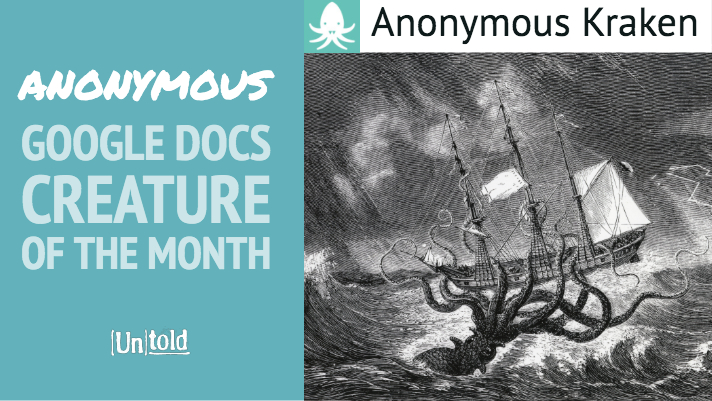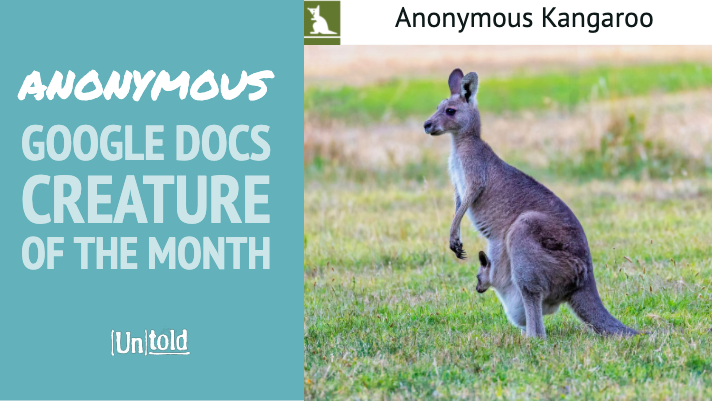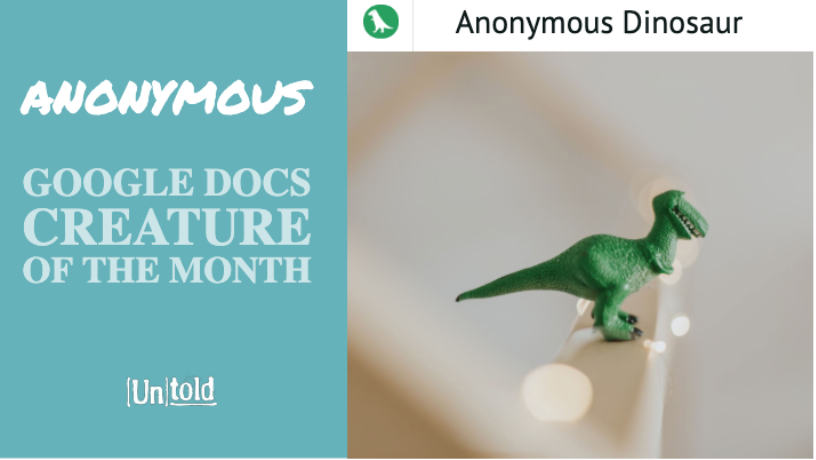Blog >> Anonymous Google Docs Creatures
Anonymous Google Docs Creatures
As writers, we often find ourselves working in collaborative documents with clients and other creatives, and the many Anonymous Creatures within Google Docs have not escaped our notice. We want our readers to discover each new creature along with us! In our monthly newsletter, we feature our Anonymous Google Docs Creature of the Month! Join our community of and sign up for our newsletter. Here’s our comprehensive list from 2019!












And our personal favorite from 2018:





